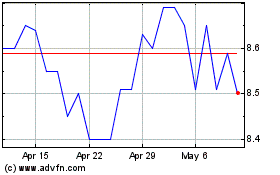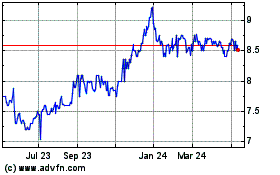RX Exploration Inc. Receives NI 43-101 Report on Drumlummon
September 05 2007 - 5:36PM
Marketwired Canada
RX Exploration Inc. ("RX")(CNQ:RXEX) is pleased to announce that it has received
its technical report on its optioned Drumlummon Property. The independently
commissioned report has been prepared in National Instrument 43-101 format by
Timothy J. Beesley, P.Eng., of T.J. Beesley Geological Services Inc., a
"qualified person" within the meaning of that instrument. The report ties
together mining and geological data from the last 134 years to recent drilling
carried out for RX and draws conclusions and makes recommendations to allow RX
to proceed with exploration and development of the Drumlummon Property.
Following are extracts of the highlights of Mr. Beesley's report. He has
reviewed the contents of this news release and has authorized its dissemination.
Summary
The Drumlummon Property includes the Drumlummon Mine at Marysville, Montana, one
of the larger former producers of gold and silver in the Western United States.
Marysville lies 25 miles northwest of Helena, the state capital of Montana. The
mine produced precious metal which included 1.1 to 1.2 million tons with an
average grade of 0.5 ounce/ton gold. The Drumlummon mine is of the "bonanza"-
type epithermal deposits which are very young and low temperature in origin and
which can produce high grades over large widths. For a number of reasons,
including a 20-year lawsuit between competing mining companies, there are
substantial areas in the mine which have never been developed and have been
flooded since 1901. Testing of virgin exploration areas containing the
Drumlummon Lode and parallel and intersecting lodes is warranted and recommended
down dip from the mined part of the Xmas Vein on the 800 Level. William Wade's
activities in this part of the mine were curtailed in 1950 when his mill burned
down. Potential here is considered excellent. At the same time the 'previously
disputed ground' south of Wade's Xmas Vein is considered a prime target and
should be tested, for the first time ever. A program of rehabilitation of the
400 Level, crosscutting to establish drill stations, and underground diamond
drilling will test vertical sections of these targets in detail. It is estimated
that an in-house company-managed exploration program budget will total
$1,462,000, and the same program if carried out by a contractor would cost
$1,939,800.
The Drumlummon mine is covered in its entirety by 26 contiguous surveyed,
patented mineral claims dating to the early days of mining in the 1870's, and
covering an area of approximately 290 acres. A group of 68 contiguous unpatented
mineral claims was staked on behalf of RX in 2007. These claims overlap the
southern part of the patented claims and extend for another 2 miles to the
southwest covering a total area of approximately 1,390 acres.
History
The Drumlummon gold-silver veins were discovered by Thomas Cruse while following
up quartz vein material occurring in gold placer deposits. The Drumlummon claim
was patented in July, 1879. In 1883 the whole of the Drumlummon lode was
transferred by Thomas Cruse to The Montana Co. Ltd. which mined the Drumlummon
lode from 1883 until 1901. Between 1883 and 1910 a dispute between the St Louis
Company and the Montana Company over apex rights on the St. Louis Claim, owned
by the former company and the 9-Hour Claim belonging to the latter. The
Drumlummon hanging wall vein strayed over the St. Louis claim boundary into the
St Louis Claim from the 9-Hour Claim. The St. Louis claim had precedence over
the 9-Hour claim. A jury trial was held in 1899 and the apex rights for 610 feet
of the Drumlummon hanging wall vein was awarded to the St. Louis Company. In
1901 the Montana Company pulled the pumps on the Drumlummon mine and the mine
flooded to the 400 level, where it remained until 1941. Five appeals were
entered between 1901 an 1910, but the verdict remained the same and in 1910,
rather than pay damages, the Montana Company gave the Drumlummon mine to the St.
Louis Company. The St. Louis Company, lacking mining expertise and wherewithal,
never mined the Drumlummon, but leased it out to tributors who mined above the
400 Level. Between 1941-1951 the Montana Rainbow Company under the direction of
William Wade revived the Drumlummon mine and achieved successful production. The
mine was dewatered to the 800 Level and new ore was discovered south of the No.
2 Shaft, in particular the Xmas Vein, which Wade discovered in the hanging wall
of the Drumlummon vein by diamond drilling. Between 1946 and 1951, made mined
and produced gold, silver, copper, lead, and zinc were recovered. Wade (7)
describes gold results from the Xmas Vein. The ore shoot was 600 feet long, 12
to 14 feet wide and stoped $16.50 between the 800 and 700 (0.47 oz/ton) and $24
between the 600 and 700 (0.69 oz/ton) and above the 600 went to $35 (1.0 oz/ton)
and up to $50 per ton (1.43 oz/ton). The Montana Rainbow Company ceased activity
when the mill burned down in 1950 and no satisfactory custom milling and
smelting could be arranged. During the 1980's, attempts were made to put the
mine back into production. Diamond drilling exploration was undertaken but no
production was achieved. Those efforts terminated when financing arrangements
failed with the stock market collapse of October 1987.
It is not possible to present mineral resource and mineral reserve estimates as
estimates in accordance with section 2.4 of National Instrument 43-101 are not
in existence.
Interpretation and Conclusions
The Drumlummon mine represents the largest accumulation of precious metals in
the Marysville mining district, due to the coincidence of a number of key
structural and metamorphic factors. The Drumlummon vein fissure system is
developed along the southeastern contact of the Marysville stock where it is
vertical. The contrasting competence of the Marysville stock quartz diorite and
the contact metamorphic siliceous, brittle hornfels formed a locus for large
scale faulting and facilitated the development of the wide Drumlummon
breccia-fissure veins and large intersecting vein sets into which the low
temperature epithermal precious metals were deposited. Because of the length and
continuity of the vein fissure system the Drumlummon mine has a produced on
average an order of magnitude (10X) greater value of precious metals than the
various other mines in the district. Consequently undeveloped sections of the
Drumlummon mine and extensions to the north (Last Hope claim) and south (beneath
and south of the 9 Hour workings) are considered the best places in the
Marysville district to developed grade and width of precious metal
mineralization.
The 'previously disputed area', between Shaft No. 2 and the 9 Hour workings,
beneath the 400 Level to beneath the 1600 Level has the best potential to
develop precious metal resources. This area has been out of play since 1901 when
the Montana Company flooded the mine to the 400 Level after receiving adverse
court rulings. Technical opinion at the time and more recently is overwhelmingly
in favour of the theory that the width and grade of the precious metal veins
would continue into this area from the stopes to the north. The Montana Company
said the area was barren, but appealed their negative verdict three times in the
State Supreme court and twice in the U.S. Supreme Court to no effect, before
handing the mine over to the St. Louis Company in 1910 as settlement of
judgment. Some of the widest and richest fissure vein material was mined in the
lower part of the 9 Hour workings. This area and the area immediately to the
south are considered prime ground to test. Ropes (1935) recommended testing of
the Last Hope claim at the north end of the Pixley workings. This area was never
tested because of divided ownership. Wade's Xmas vein extended from Shaft No 2
600 feet to the south on the 800 Level. Mining on this level and over narrower
lengths of stopes on the 700 and 600 Levels on this vein discovered by Wade in
the hanging wall of the Drumlummon Lode was productive and lucrative, with
grades and widths typical of the main part of an epithermal system.
Recommendations
Mr. Beesley stated that testing of virgin exploration areas containing the
Drumlummon lode and parallel and intersecting lodes is warranted and recommended
down dip from the mined portion of the Xmas vein on the 800 Level. Wade's
activities in this part of the mine were terminated in 1951 when his mill burned
down. Potential here is considered excellent. At the same time the 'previously
disputed ground' south of Wade's Xmas vein is a prime target and should be
tested, for the first time ever.
Testing will be carried out by diamond drilling, alternatively from the surface
or from underground. Drilling from underground, to be carried out from the
unflooded 400 Level, would require rehabilitation of sections of the level and
preparation of crosscuts and diamond drill stations and would require more lead
time. Mr. Beesley recommended underground diamond drilling. The superior
advantage to underground diamond drilling would be shorter holes and better
control to the target. The patterns shown are 100-ft centers, thought adequate
for establishing resources. The drill can be fanned in either direction to
reproduce this pattern at 100-ft intervals along strike of the veins.
Now that the report is available, RX will continue discussions regarding the
financing necessary to complete the program recommended by Mr. Beesley. No
arrangements have been concluded at this time.
RX Exploration Inc. (CUSIP # 78347W107) is a reporting issuer in good standing
in the Province of Ontario whose shares are listed on CNQ (Symbol: RXEX). There
are currently 23,033,675 common shares issued and outstanding.
Forward Looking Statements: Statements made in this news release that relate to
future plans, expectations, events or performances are forward looking
statements. Such statements involve risks and uncertainties and are based on
current expectations. Consequently, actual results could differ materially from
the expectations expressed in these forward-looking statements.
Biosyent (TSXV:RX)
Historical Stock Chart
From Jun 2024 to Jul 2024

Biosyent (TSXV:RX)
Historical Stock Chart
From Jul 2023 to Jul 2024
